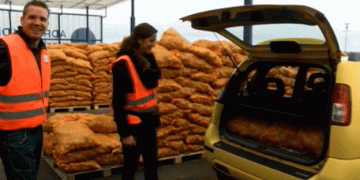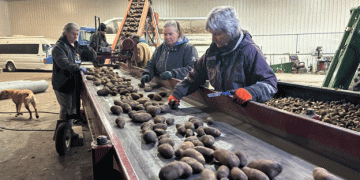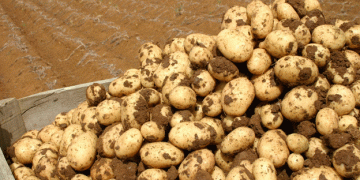IonoGuard: Precision Farming’s Shield Against the Solar Storm Surge
As agriculture becomes increasingly reliant on high-precision satellite navigation systems, any disruption to positioning data can mean serious setbacks—from misapplied fertilizers to lost yields. Now, with the global onset of Solar Cycle 25, which began in 2024 and is expected to peak between 2025–2026, the agriculture industry faces a heightened risk: ionospheric interference caused by solar storms.
In response, Trimble and PTx Trimble have launched IonoGuard, a groundbreaking solution designed to maintain the integrity of RTK (Real-Time Kinematic) GNSS signals even under severe solar conditions. This innovation provides a much-needed safety net for growers and ag service providers working in precision agriculture—especially in vulnerable equatorial regions, where solar scintillation is a common year-round occurrence.
Why Solar Storms Matter for GPS in Agriculture
Solar storms, or geomagnetic disturbances, occur when bursts of energy from the sun disturb the Earth’s ionosphere. For most people, these events go unnoticed. But for RTK GNSS-dependent systems, which rely on centimeter-level precision, even slight disturbances can lead to major operational downtime.
According to NASA and the NOAA Space Weather Prediction Center, Solar Cycle 25 is expected to be more active than initially forecast, with increased frequency of solar flares and coronal mass ejections (CMEs). These events can trigger ionospheric disturbances that delay or degrade satellite signals, affecting auto-steer tractors, variable rate applicators, UAVs, and other precision farming tools.
In agricultural regions such as Southeast Asia, Northern Australia, Sub-Saharan Africa, and South America, where equatorial ionospheric conditions are already unstable, the effects can be particularly severe and constant.
How IonoGuard Works: Boosting Signal Reliability
IonoGuard is engineered to counteract these issues by enhancing signal processing and reducing susceptibility to signal loss. It’s integrated into Trimble’s NAV-900 guidance controller via the latest Precision-IQ firmware, and also works with base stations that use Trimble’s ProPoint GNSS positioning engine.
Key features include:
- Improved RTK signal tracking during high ionospheric disturbance periods
- Increased uptime during solar storms, keeping equipment running without interruption
- Lower input waste during critical operations like planting and spraying
- Reduced labor and downtime costs due to fewer field delays
Field validation from early adopters like Vantage Australia showed impressive performance during the May 2024 solar storm, a significant test case that highlighted how IonoGuard maintained signal precision even as others experienced dropouts.
“Knowing we can better weather the next major solar storm with less risk for signal loss provides peace of mind,” said Michael Munro of Vantage Australia.
Why It Matters: Economic and Operational Impact
Precision agriculture relies on sub-inch GPS accuracy, especially during planting, where errors can affect plant population, spacing, and yield potential. Solar-induced RTK signal loss during this phase can lead to:
- Misalignment in seed rows
- Overlapping passes, wasting inputs like seed and fertilizer
- Unnecessary fuel use and operator hours
- Yield penalties due to poor spacing or skips
Trimble estimates that even a few hours of GPS signal downtime during peak seasons can translate to thousands of dollars in losses per operation. Technologies like IonoGuard help mitigate these risks, ensuring farming operations remain consistent—even during geomagnetic chaos.
As we move deeper into Solar Cycle 25, farmers and ag professionals need to be prepared for disruptions that go beyond weather or mechanical breakdowns. Trimble’s IonoGuard emerges as a vital innovation, ensuring continuity, efficiency, and reliability in precision agriculture—even under extreme solar activity. With adoption already growing across vulnerable regions, it’s a clear sign that farming through the storm is now possible.






